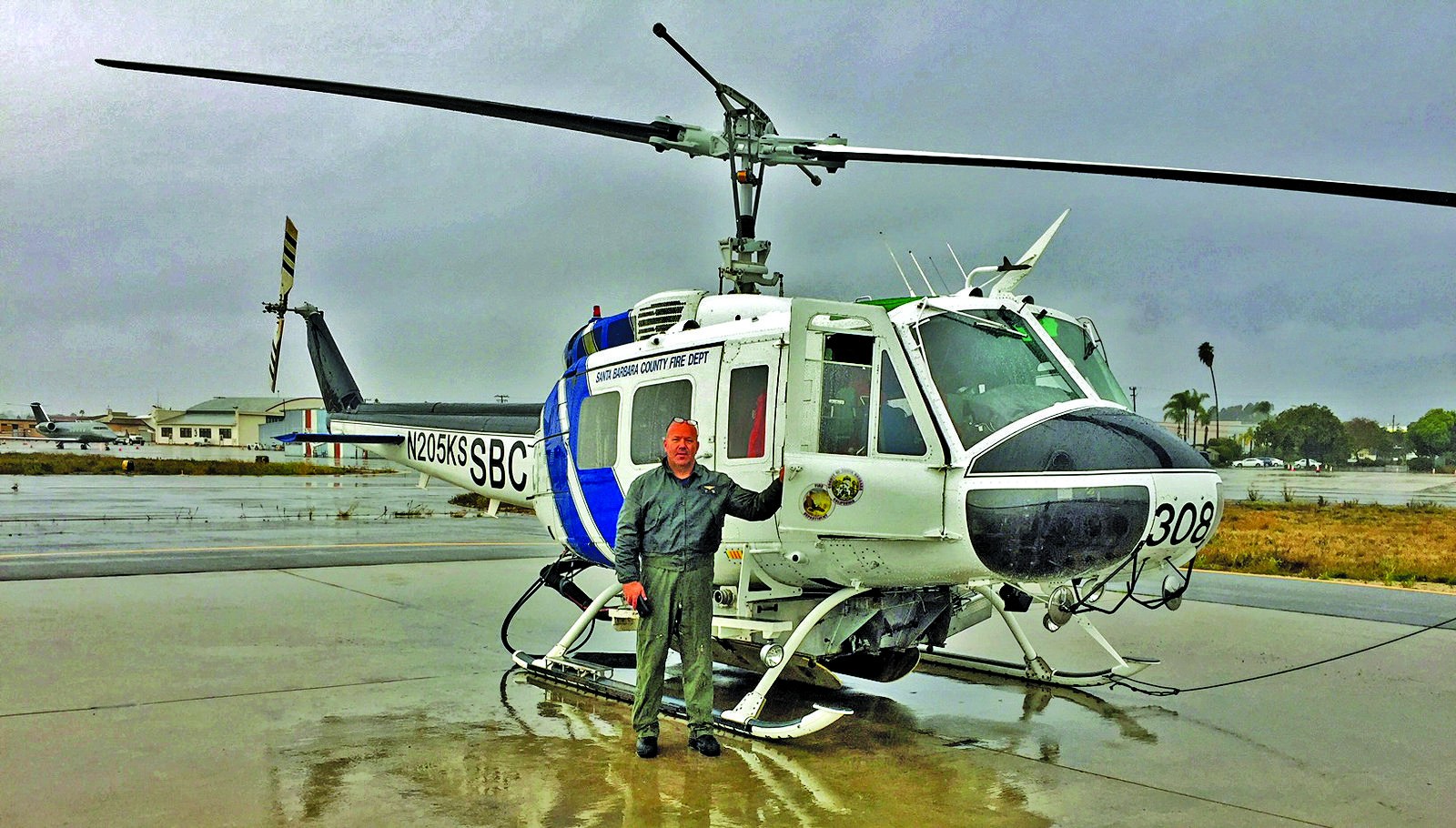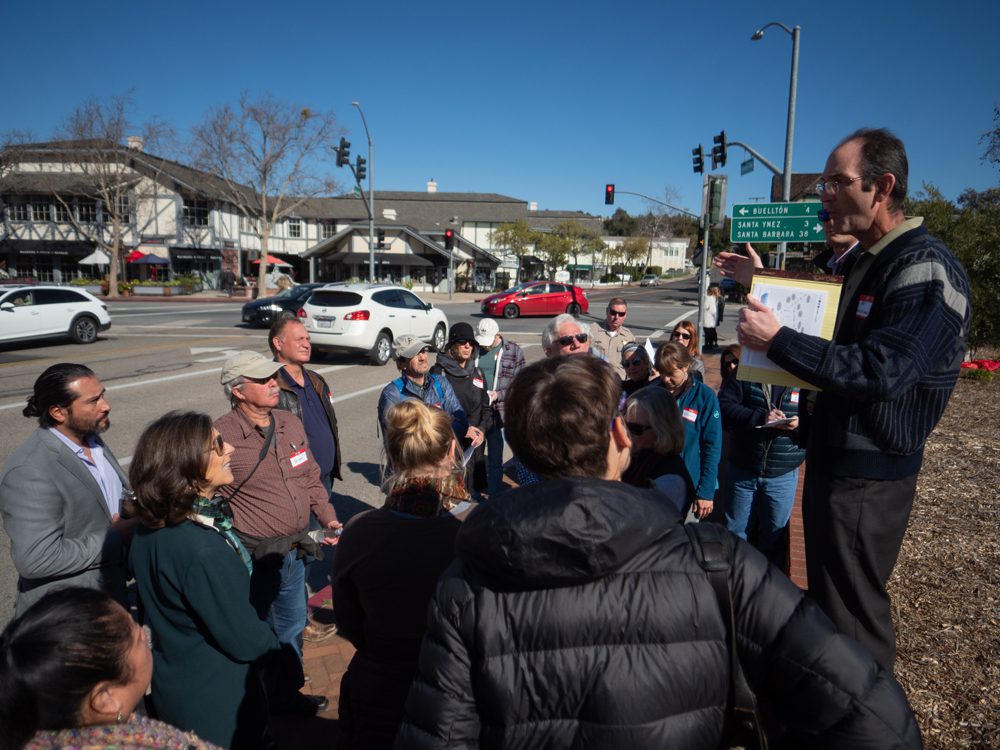By Raiza Giorgi
Matt Udkow grabbed his night vision goggles and looked toward the Santa Ynez Mountains to get a look at the weather conditions as the first calls for the Montecito mudslide were coming in at 4:30 a.m. on Jan. 9.
Udkow is a pilot for Santa Barbara County Air Support Unit Copter 308, and this was his first call after being hired six months earlier.
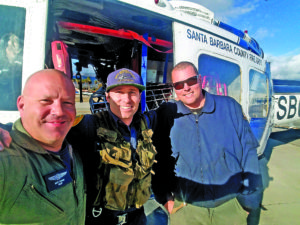
The crew of Santa Barbara County Air Support Unit Copter 308 consists of pilot Matt Udkow, Bryce Wible and Glen Dupont.
Photo contributed
“The clouds were hanging low, which to me meant there would be no visibility, and I suggested we contact our friends at the Coast Guard out of Point Magu to see if they could get in first, as there were so many calls coming in and the victim count was going up. They were actually able to get the first two burn victims out from the fires that started,” Udkow said.
Udkow had been training for this situation the day before, doing water hoist rescue drills with his crewmates Glen Dupont and Bryce Wible.
Before joining the county crew, Udkow spent 20 years in the U.S. Navy and Coast Guard flying rescue operations. He was on duty when Hurricane Katrina hit and said the local situation was reminiscent of that hurricane.
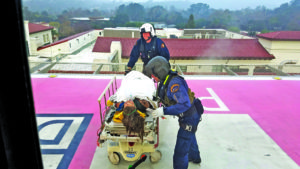
Copter 308’s first call Jan. 9 was to rescue an injured woman and take her to Santa Barbara Cottage Hospital.
Photo contributed
“I felt the gravity of the situation in Montecito but I had to wait until daylight, as I couldn’t put my crew at risk. We opted to take the path through Gaviota (from Santa Ynez Airport), flying very low and slow until we got to the coast. Our first call was for a caving chest wound that we hoisted from a baseball field and took the patient to Cottage (Santa Barbara Cottage Hospital),” Udkow said.
His crew is a joint effort of the Santa Barbara County fire and sheriff’s departments with a fleet that includes three Huey helicopters and two OH-58 helicopters typically used for law enforcement operations. Both crews worked in coordination with crews from Ventura County and the Coast Guard, spread out over the Montecito area. That day the crews combined to rescue 131 people, 42 dogs, 11 cats and three birds.
“It was an honor to do it, and by far the hardest rescue I’ve done,” Udkow said.
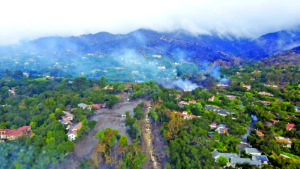
“At some points the only way I could distinguish where we were was using the fires as landmarks,” said Copter 308 pilot Matt Udkow.
Photo contributed
After their first rescue, Udkow said, the rain was coming down so hard that they had to wait 10 minutes to take off again. Their next call was a woman frantically waving from her rooftop. After she was hoisted she told the crew her neighbor had broken his leg. Her daughter was also missing, but ultimately was found and reunited with her mother, Udkow added.
As they unloaded and refueled at Santa Barbara Airport, the husband of mudslide victim Rebecca Riskin was being unloaded on a stretcher. Udkow remembers Riskin taking his hand, with a far-away look in his eyes, and telling Udkow that his wife had been swept away.
“He said it so matter of fact, and that really took me by surprise. Then a paramedic friend pulled me aside and said it was a sign of shock,” Udkow added.
As the crew got back into the air, another call came in of an elderly woman and two firefighters stuck in the mud.
“As we hovered above them there was rain like I have never seen. It was leaking in the top of the helicopter, and … our radios died. I couldn’t see 100 feet in front of me. The firefighters were from Montecito Fire Department and stuck up to their waists in mud,” Udkow said.
Once they unloaded those passengers, they were grounded again because the water had damaged the helicopter so badly. However, they were able to dry out and take off again after a frustrating hour.
“At this point there was a strange smell, and doing hoists are risky enough as it is. We ended up flying to Van Nuys, where our helicopter is now being repaired. I just thank my crew for getting us through it and all the joint operations coming together to get the job done,” Udkow said.
The crew is now using another helicopter to fly geologists, hydrologists and county inspectors over the disaster area to survey what is left and what needs to be done.
“There is still a lot of debris and boulders and the potential for another event,” Udkow said.

